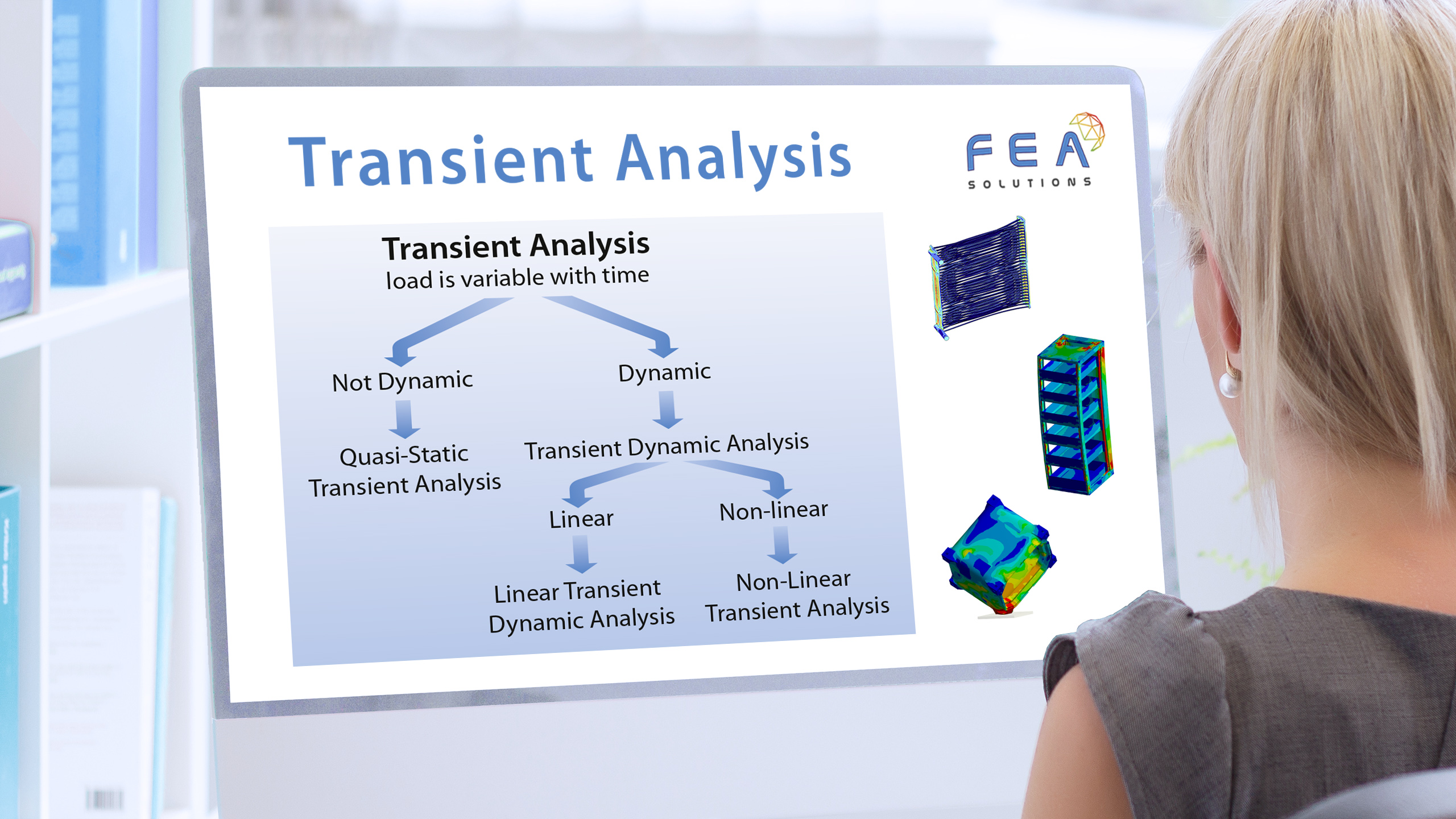
05 Jun Transient Analysis
An analysis is transient if the load is variable with time. A transient analysis is however not necessarily dynamic, as it could be quasi-static (https://fea-solutions.co.uk/quasi-static-transient-analysis/) as well. The difference between static and dynamic analysis is explained here (https://fea-solutions.co.uk/static-vs-dynamic-analysis/).
If a transient analysis is dynamic as well, it is called transient dynamic analysis or full transient analysis.
If non-linearities are included in the simulation, it is called non-linear transient dynamic analysis (https://fea-solutions.co.uk/non-linear-transient-dynamic-analysis/), otherwise it is called linear transient dynamic analysis (https://fea-solutions.co.uk/linear-transient-dynamic-analysis/). For an explanation of the difference between linear and non-linear analysis, please visit (https://fea-solutions.co.uk/non-linear-behaviour/).
In a transient analysis, results are available for discreet time steps. Hence, where static analyses have one set of results, transient analyses have one set of results for each time step. Time step sizes can be adjusted according to the duration of the dynamic event, but they are typically smaller that 1ms (one millisecond).
Please call us today on +44 (0)1202 798991 for any engineering analysis requirements you might have.
